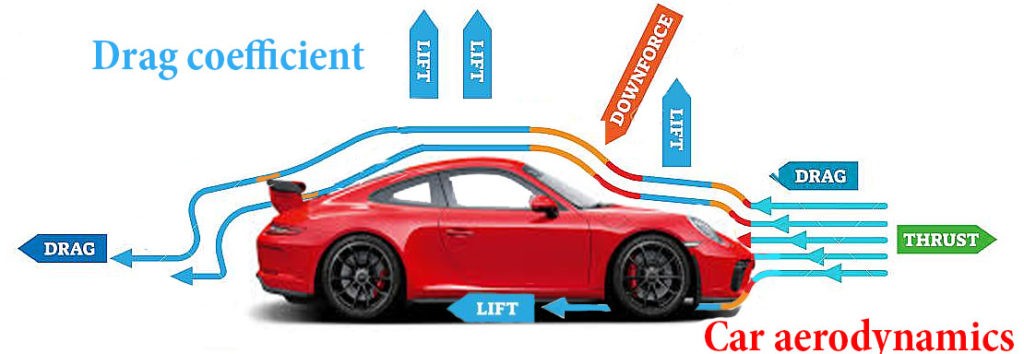
- Introduction
- The Fusion of Speed and Data
- Real-Time Telemetry: The Pulse of F1 Cars
- Predictive Analytics in Race Strategy
- Tire Management and Wear Prediction
- Driver Performance Optimization
- Vehicle Aerodynamics and Simulation Models
- Pit Stop Analysis and Efficiency
- Conclusion
Introduction
Formula One (F1) is often seen as the pinnacle of motorsport, where technology, engineering, and driving skill intersect at breakneck speeds. But beneath the roar of engines and the flash of carbon-fiber bodies lies another quiet yet powerful force: data analytics. Modern F1 racing is no longer just about horsepower it’s about intelligence. Teams today are equipped not only with world-class drivers and machinery but also with data scientists, analysts, and engineers who extract every millisecond of advantage through numbers and patterns Data Analytics Training . In this blog, we explore how data analytics is the silent driver behind the most successful Formula One teams and how it continues to reshape competitive motorsport. In the high-speed, high-stakes world of Formula One racing, data analytics plays a crucial role in giving teams a competitive edge. By collecting and analyzing massive amounts of real-time data from tire performance and fuel consumption to track conditions and driver behavior—teams can make smarter, faster decisions during races. This data-driven approach helps optimize strategies, improve car performance, and anticipate challenges before they happen Scala Certification . For the best Formula One teams, leveraging advanced analytics is not just a luxury; it’s an essential part of staying ahead in a sport where milliseconds can determine victory or defeat.
The Fusion of Speed and Data
Formula One has evolved from a purely mechanical sport to a data-intensive battleground. Each F1 car is a high-speed data hub, transmitting thousands of data points per second. Onboard sensors capture data about fuel efficiency, speed, acceleration, tire pressure, engine temperature, gear ratios, and even driver biometrics. With over 300 sensors fitted in a car generating nearly 1.5 terabytes of data per race, teams have unprecedented insights into every aspect of performance. This shift has enabled racing teams to make Spark SQL data-driven decisions in real time and during race preparation. The margin between victory and defeat is razor-thin, and data analytics helps teams edge out the competition. In Formula One racing, speed alone isn’t enough to guarantee victory precision and data-driven strategy play equally vital roles.

The fusion of speed and data has revolutionized the sport, enabling teams to push the limits of performance while minimizing risks. Every lap generates an enormous stream of data, from engine metrics and tire temperatures to aerodynamic efficiency and driver inputs. Advanced analytics tools process this information in real time, allowing engineers and strategists to make split-second decisions that can change the course of a race. By combining cutting-edge technology with raw speed, Formula One teams optimize pit stops, adjust race tactics, and enhance vehicle performance Apache Pig. This seamless integration of data analytics with racing expertise transforms not just how fast cars go, but how smart teams are on the track—making data the ultimate co-driver in the quest for victory.
Interested in Obtaining Your Data Analyst Certificate? View The Data Analytics Online Training Offered By ACTE Right Now!
Real-Time Telemetry: The Pulse of F1 Cars
- Continuous Data Stream: Real-time telemetry transmits live data from the car’s sensors to the pit crew and engineers.
- Key Metrics Monitored: Includes engine performance, tire pressure and temperature, brake status, fuel levels, and aerodynamic data.
- Instant Decision-Making: Big Data Career Path Enables teams to make quick strategic decisions during races, like when to pit or adjust settings.
- Driver Performance Tracking: Monitors driver inputs such as throttle, braking, and steering for performance analysis.
- Predictive Maintenance: Helps detect potential mechanical issues early, reducing the risk of failure on track.
- Enhances Safety: Alerts teams to critical problems in real time, allowing immediate action to protect the driver.
- Data Integration: Telemetry data is combined with weather and track conditions to optimize race strategy.
To Explore Data Analyst in Depth, Check Out Our Comprehensive Data Analytics Online Training To Gain Insights From Our Experts!
Predictive Analytics in Race Strategy
- Lap Time Forecasting: Predictive models estimate future lap times based on fuel load, tire wear, and track conditions.
- Optimal Pit Stop Timing: Analytics predict the best lap to pit for tire changes or refueling, minimizing time loss.
- Tire Degradation Modeling: Predicts tire wear patterns to determine the most effective tire strategy throughout the race.
- Competitor Strategy Prediction: Data Analytics Training Analyzes rivals’ behavior and past data to anticipate their next move or pit stop.
- Weather Impact Analysis: Uses weather data to simulate how changes in conditions may affect grip, speed, and strategy.
- Fuel Management: Predicts fuel consumption to balance speed with efficiency and avoid unnecessary stops.
- Driver Behavior Insights: Forecasts how a driver might perform under various conditions, aiding in real-time decisions.
Tire Management and Wear Prediction
In Formula One, tire performance can make or break a race. Managing tire wear is a critical component ofPredictive Analytics in Race Strategy , and predictive analytics plays a key role in optimizing this process. By analyzing real-time data such as track temperature, driving style, lap times, and tire compound behavior, teams can accurately forecast tire degradation over time. These predictions help determine the ideal moment for pit stops and which tire compounds to use under different race conditions Big Data Analytics . Advanced models simulate tire wear scenarios, allowing engineers to anticipate performance drops before they happen. This proactive approach enables teams to balance aggression and preservation, ensuring drivers maintain optimal grip without overusing the tires. Effective tire management through predictive analytics not only extends tire life but also maximizes overall race performance, giving teams a strategic edge in a sport where every second counts.
Gain Your Master’s Certification in Data Analyst Training by Enrolling in Our Data Analyst Master Program Training Course Now!
Driver Performance Optimization
- Real-Time Data Monitoring: Continuous tracking of driver inputs such as throttle, braking, and steering to analyze performance during the race.
- Telemetry Feedback: Provides instant feedback to drivers on areas for improvement, helping them adjust driving style for better efficiency and speed.
- Simulated Training: Use of simulators to help drivers practice and refine techniques under varying track and weather conditions Career in Big Data Analytics .
- Physical and Mental Conditioning: Optimizing driver fitness and focus to maintain peak performance during intense, high-pressure situations.
- Strategy Alignment: Integrating driver behavior data with team race strategies to enhance decision-making and responsiveness on the track.
Are You Preparing for Data Analyst Jobs? Check Out ACTE’s Data Analyst Interview Questions and Answers to Boost Your Preparation!
Vehicle Aerodynamics and Simulation Models
In high-speed motorsports like Formula One, vehicle aerodynamics play a crucial role in performance and stability. Aerodynamics focuses on how air flows around the car, affecting drag, downforce, and cooling. Optimizing these factors allows teams to increase speed while maintaining control. Simulation models are essential tools in this process, enabling engineers to analyze airflow digitally before physical testing.

Using computational fluid dynamics (CFD), teams create detailed virtual models that simulate air behavior around different car designs and track conditions. These simulations help predict aerodynamic efficiency, identify potential problem areas, and test modifications without costly Data Architect Salary wind tunnel experiments. By combining real-world data with advanced simulation models, teams refine their cars to achieve the perfect balance between speed, grip, and fuel efficiency giving them a vital edge on the track.
Pit Stop Analysis and Efficiency
- Critical Time Factor: Pit stops can make or break a race by impacting overall race time significantly.
- Precision Coordination: Requires seamless teamwork between mechanics, engineers, and the driver for quick tire changes, refueling, and adjustments.
- Data-Driven Decisions: Cassandra Keyspace Analytics monitor real-time race conditions, tire wear, and competitor strategies to determine optimal pit stop timing.
- Performance Tracking: Measures and analyzes pit stop durations to identify areas for improvement.
- Error Minimization: Focus on reducing human errors such as slow tire changes or miscommunications during high-pressure situations.
- Technology Integration: Use of sensors and automated tools to speed up processes and ensure safety.
- Strategy Adaptation: Pit stop plans can change dynamically based on race developments, weather, and car performance.
Conclusion
Formula One is no longer a sport defined solely by mechanical engineering or raw talent; it’s a data battlefield where analytics drives strategy, performance, and precision. From pre-race modeling and tire degradation forecasts to split-second pit stops and post-race insights, every element of F1 is touched by data science. For the best Formula One teams, data analytics isn’t just a tool, it’s their competitive edge. In a world where milliseconds matter, those who analyze faster, drive faster. Pit stop analysis and efficiency Data Analytics Training are vital components in the fast-paced world of motorsports. By leveraging data analytics, precise coordination, and advanced technology, teams can minimize pit stop durations and reduce errors, directly influencing race outcomes. Efficient pit stops not only save valuable seconds but also enhance driver safety and overall team performance. Continuous analysis and improvement of pit stop processes ensure that teams stay competitive and adapt swiftly to changing race conditions, making pit stop efficiency a crucial factor in securing victory on the track.


